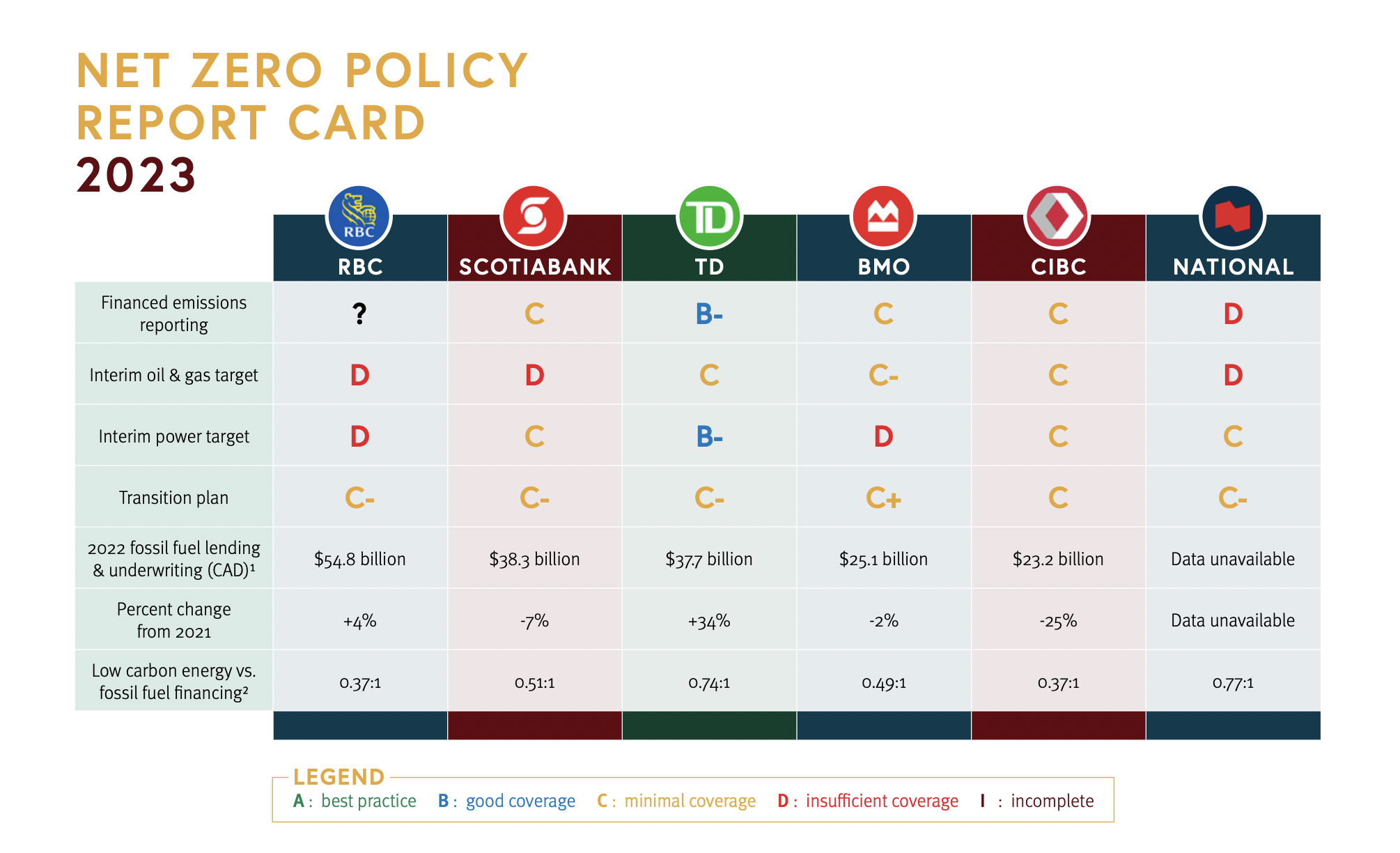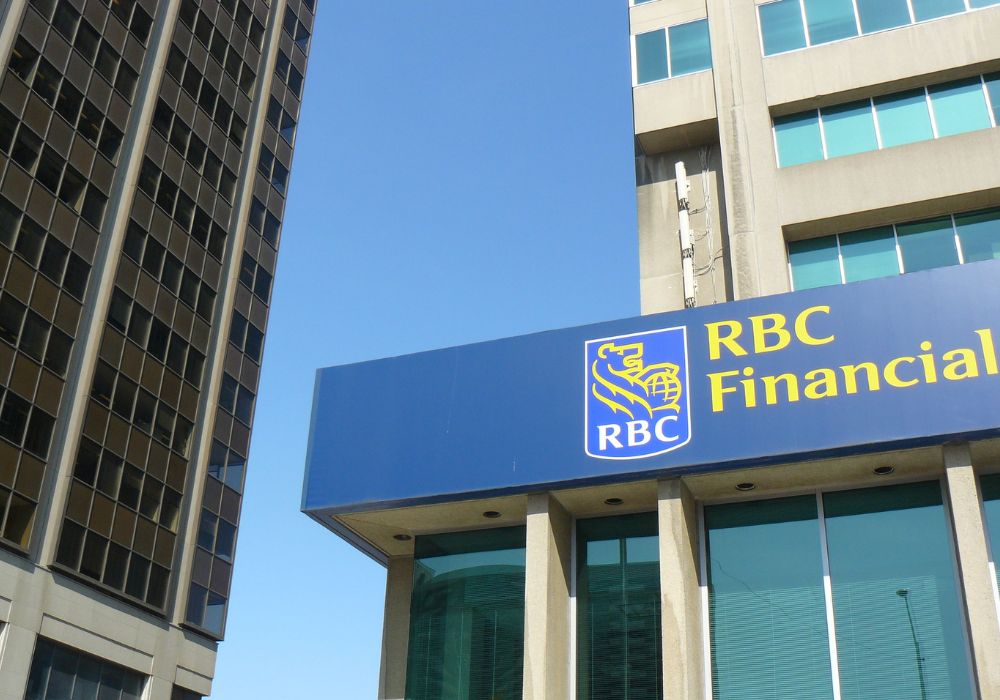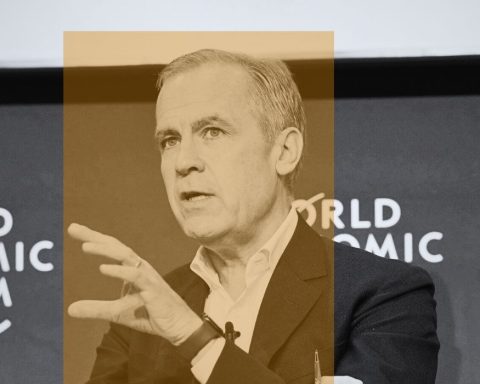This summer, the urgency of the energy transition has come into sharper focus as Canadians struggle with forest fires and dangerous air quality. A pressing question is where the money is going to come from to shift our economy to a low carbon footing.
At Investors for Paris Compliance, we just reviewed our major banks’ net zero progress to assess whether they may have it covered. They say they are committed to net zero, and between them, they have pledged about $2 trillion of what they call “sustainable finance” by 2030. Coincidentally, that figure corresponds to the amount of investment RBC estimates is needed to get the whole of Canada to net zero by 2050.
Unfortunately, this isn’t what the banks mean. They in fact have no common yardstick to measure “sustainable” and are instead responding to general environmental and social concerns in the market with a range of instruments such as green bonds and sustainability-linked loans that pay a bit of lip service to these issues while making money for the banks. It’s a new profit centre, which is why they’ve set large targets for this business segment, but with no necessary relationship to reducing their financed emissions.
This becomes apparent in the many examples of “sustainable finance” that result in emissions going up, not down. All the banks do this, whether it’s Scotiabank financing a company expanding airports in Mexico, RBC financing a company expanding an oil pipeline in Minnesota, or BMO and CIBC financing a company expanding metallurgical coal exports from BC. They rationalize this by saying the companies are getting more efficient at their business, but the net result is more emissions driving the climate crisis – the opposite of “sustainable.”
To date, our regulators have been tolerant of this greenwashing, but that stands to change. Canadian securities regulators are signaling that ESG disclosure is still disclosure, subject to the same rules of veracity as financial disclosure. The Office of the Superintendent of Financial Institutions has new climate risk guidance that requires banks to have climate transition plans, while banks claim sustainable finance is a key pillar of that. And the Competition Bureau is already processing a complaint regarding greenwashing at RBC, which includes its sustainable finance practices.
Moreover, Canada is developing a taxonomy to categorize which investments are sustainable and which aren’t. This has been held up by foot dragging at the Ministry of Finance, but given other countries are forging ahead with their taxonomies, it’s inevitable we’ll soon need to catch up with our own version.
Ultimately, though, we won’t get the infusion of capital we need to make the transition without realigning incentives. As long as banks can profit from increasing emissions, they will – even if it contradicts their own net-zero promises. Last year, RBC became the largest fossil fuel financier on the planet, while TD logged the biggest jump in fossil financing of any global bank. This is why an escalating carbon price is necessary, but it’s not the only tool that regulators have.
The greatest power we give banks is the ability to create money. Banks don’t print currency like the Royal Canadian Mint does, although they once did. Instead, we grant them the ability to lend out greater amounts than they hold in deposits, thereby increasing the money supply. We believe this is in the public interest since it fosters economic activity, but our banks also profit handsomely from the arrangement.

Regulators do weigh in by adjusting capital requirements the amount banks must hold in reserve, varying this by the level of risk in the economy, which could cause liquidity pressure on the banks or, in extreme cases, bank runs.
With our country on fire, we can now conclude that it is no longer in the public interest to let our banks create money to lend to activities that throw on more gasoline. In so doing, banks drive up risk to the financial system via climate disruption to the economy, as well as risk in delaying the transition by locking in high carbon assets.
Regulators should address these financial risks with differentiated capital requirements. High carbon lending should require larger reserves, and low carbon lending the opposite. This would encourage money creation for activities that reduce emissions and curtail it for activities that increase them. The incentive structure would thereby better align bank financing with net zero and with reducing climate risk to the system.
Canada is a rich country with the necessary capital to finance the energy transition, but we won’t get there without changing the incentive structure for banks and other financial institutions. Regulators have more tools in their toolbox to make this happen – it’s past time to use them.
Matt Price is executive director of Investors for Paris Compliance, an advocacy group working to hold publicly-traded companies accountable to their net-zero promises. It just released its 2023 Canadian banks net-zero report card.







